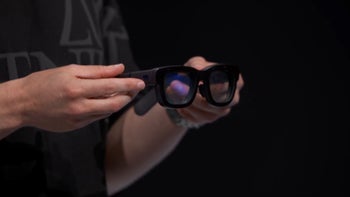Apple could solve the Vision Pro’s weight problem by… adding some more

The latest Power On newsletter by Bloomberg’s Mark Gurman shines a light on an issue that some have with the Vision Pro. No, not the complications that people who wear glasses could potentially face. The other problem – the one has to do with the possibility that the Vision Pro could turn out to be too heavy for some.
Contrary to what you might think of as a solution, Apple might try to resolve this one by… adding more weight, not taking away (via 9to5Mac). Apparently, it’s all about weight distribution.
Patently Apple spotted that Apple has just obtained a patent relating to a future version of the Vision Pro headset that focuses on reducing the neck strain. Right now, most AR/VR headsets are designed in such a way that most of the weight is at the front, exerting downward pressure at the front. Continuous usage easily becomes a source of neck fatigue.
Thus, the balancing mass may be moved in response to tilting about a pitch axis formed by a head-neck pivot joint of the user. In an upright position, the balancing mass may be positioned rearward of the head-neck pivot joint and the display unit forward of the head-neck pivot joint.
Patently Apple spotted that Apple has just obtained a patent relating to a future version of the Vision Pro headset that focuses on reducing the neck strain. Right now, most AR/VR headsets are designed in such a way that most of the weight is at the front, exerting downward pressure at the front. Continuous usage easily becomes a source of neck fatigue.
Enter the counterweight idea, as the report says:
The patent relates to a head-mounted display (a headset) that includes a display, a head support, and a balancing mass. The head support is coupled to the display to support it on the head of the user. The balancing mass is movable relative to the display unit to offset changes in torque induced by the display unit when tilting the head-mounted display.
Thus, the balancing mass may be moved in response to tilting about a pitch axis formed by a head-neck pivot joint of the user. In an upright position, the balancing mass may be positioned rearward of the head-neck pivot joint and the display unit forward of the head-neck pivot joint.







Things that are NOT allowed: